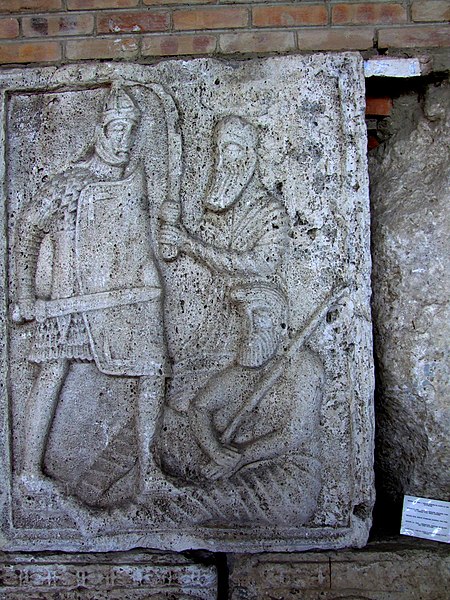Just recently i bought a book about Roman Imperial Armor, written by J. Kaminski and D Sim. This book is full of information about manufacturing process needed to manufacture armors and shields, it also provided a whole new perspective on some things.
Lets go to the myth section - Lorica Segmentata - or more precisely as Romans called it - Lorica Laminata, was by any means not the best armor Roman Legionary could have. It was most likely introduced to reduce costs,as Roman Empire needed to buy all equipment to Legionaries. Laminata was quite simple to manufacture, and it provided relatively decent protection (for its weight) due to its face hardened plates. Btw, face hardening was a metallurgy technique thanks to which inner side of armor plate was composed of soft steel while outer was hardened. Surprisingly, this metallurgical technology was "reinvented" in 19.century, and in 20.century it was for example used by Germans as their main Metallurgical technology for tank armor. Anyway back to Laminata, it was relatively light armor, providing very good protection thanks to 1-1.5mm steel plates, yet it lacked in term of coverage. Overall, it was armor for standard Legionary, yet Veteran troops preferred Lorica Hamata, as it while heavier, was less restrictive, flexible and provided much better coverage of vulnerable areas (groin, arm pit, etc).
Lorica Hamata - there were several versions of it, usually using 4mm rivetted steel rings, but also bronze and iron rings were commonly used. High quality Hamata provided excellent protection against thrusts and slashes, yet it didn't provided protection against blunt force trauma. Usually, leather undergarment was used to increase the resistance of armor and provide some protection against blunt force. While heavier than Laminata, Hamata was very comfortable to wear, didn't restricted movement which was quite important in close combat. low blunt force resistance was not as critical due to every legionary using large shield to protect himself from it.
Anyway the armor with best protection ability of all, was called Lorica Squamata - scale armor made of 1mm plates, provided excellent protection, thanks to plates overlapping each other, which meant that only 10% of body was covered by single plate, 20% was covered by 4 plates, while majority of body was covered by 2 plates, giving layered protection of 2mm of steel, which was enough against practically any hand held weapon or arrows. additional benefit of it was that in case armor was hit by a weapon, kinetic energy of impact was transferred to all nearby plates, greatly reducing the impact energy. Yet, Squamata was quite heavy, about 30-40% more than Hamata ( Laminata was lightest of them) and was not as flexible as Hamata. It was also cheaper to manufacture than Hamata armor, therefore it practically replaced Laminata as a standard issue armor, yet was used together with Hamata practically until fall of Empire.
So, to sum it up, our today's portrayal of Roman Legionaries all dressed up in Segmentata armor is a bit innacurate. It was not the armor of Elite units, as many might think, on contrary, this armor was given to low quality troops, or even Auxilias. This is backed by archaeological findings, where Laminata was discovered in places which were known being occupied by garrison forces, instead of Legions.
So from game perspective, If there was some unit resembling "Armored Legionaries" it would most likely use Squamata armor instead, While Elite units like Praetorian Guards or Evocati Cohorts would use Lorica Hamata instead. To some degree having Praetorian Guard using Laminata is similar like seeing Napoleonic Old Guard Grenadiers dressed in uniform of Line Infantry.











 Reply With Quote
Reply With Quote















